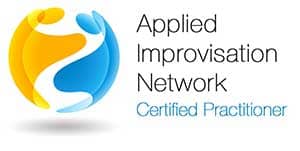Diversity and inclusion is a hot topic. Companies sink bigtime funding into D&I initiatives, universities teach diversity and inclusion courses, and the government instituted Executive Order 13583 to promote diversity and inclusion in its entire federal workforce. The trending buzzyness of the phrase and the heavy emphasis on it in the public and private sector is not without reason.
The Financial Importance of Equity
A notable and important example of the payoff for regarding and prioritizing diversity and inclusion is outlined in the Diversity Primer, which shows how Sodexo Corporation exponentially increased its return on investment through D&I initiatives. Dr. Rohini Anand, the company’s global chief diversity officer relays that, “for every $1 it invested in mentoring, it has seen a return of $19.” 1Practicing and maintaining equity in the workplace directly pays off in business growth and economic benefits. The benefits also go far beyond finance.The Psychological Importance of Equity
Qualitative data shows very clearly that the more diverse the workforce, the better the results.2 A workforce that is diverse in race, gender identity, socioeconomic status, age, religion, experience, and work style is consistently more creative, more productive and overall happier. The wider the range of personalities and experiences that are being drawn from, the larger the pool of talent that can be tapped into. The wider the talent base, the more stable and balanced it will be. So too, the more diverse the spread of backgrounds and perspectives, the more potential there is for conflict and misunderstanding, and the more need there is for focusing on effective communication strategies that bolster workplace equity.Three Communication Strategies to Support Equity and Diversity
1.Create an Open Atmosphere for Communication An inclusive community engages with diverse points of view and recognizes and respects multiple perspectives. Underlying this needs to be a commitment to open communication. Seek to cultivate listening, attention, and presence with one another. When each individual knows their voice will be heard and commits to hearing others, the playing field is leveled and all can feel welcomed. 3 2. Balance the scales A prime source of conflict in the workplace is an inconsistent, imbalanced, or unfair reward system. In the midst of multiple perspectives, it can be especially important to make clear what the expectations are for performance and what the standard is for reward. Communicating these up front will eliminate the perception of preferential treatment and bolster workplace equity. Swiftly adjust and repair any unfairness in the existing system. 3. Practice Yes/And in day to day Communication The improviser’s creed of keeping an open mind to all ideas and perspectives is extremely useful for building equity. The “Yes” part of the creed deals with willingness to receive and welcome the unexpected. In the workplace, this builds a platform upon which everyone’s ideas and strengths can be freely shared. The “And” part of the creed deals with contributing one’s personal insight to the idea someone else has offered. Applying Yes/And in the day to day communication at work reinforces the fact that everyone’s perspective is equally welcomed, and it encourages people from diverse backgrounds to build off each others’ strengths. These strategies are backed by research showing each to be effective in bolstering diversity and inclusion, which ultimately payoffs in heightened workplace satisfaction, productivity, business growth.4 Each of these strategies requires visiting and perhaps revising the style and nature of the existing communication in your business or place of work. Without needing to reinvent the wheel, you can intentionally encourage forms of communication that are already in place that support equity and inclusiveness. The philosophy and practice of applied improvisation can be an important tool in the business owner’s pocket. Applied improv teaches welcoming communication. True to the goal of diversity and inclusion, the disciplines and communication strategies practiced in applied improv help anyone welcome anyone.
- 1 https://www.forbes.com/sites/forbescoachescouncil/2019/09/06/four-strategies-for-moving-diversity-equity-inclusion-and-belonging-beyond-lip-service/#1a0adc3d1bf4
- 2https://www.mckinsey.com/business-functions/organization/our-insights/delivering-through-diversity
- 3https://www.vunela.com/how-to-create-equity-in-the-workplace/
- 4https://www.diversitybestpractices.com/sites/diversitybestpractices.com/files/import/embedded/anchors/files/diversity_primer_chapter_02.pdf











